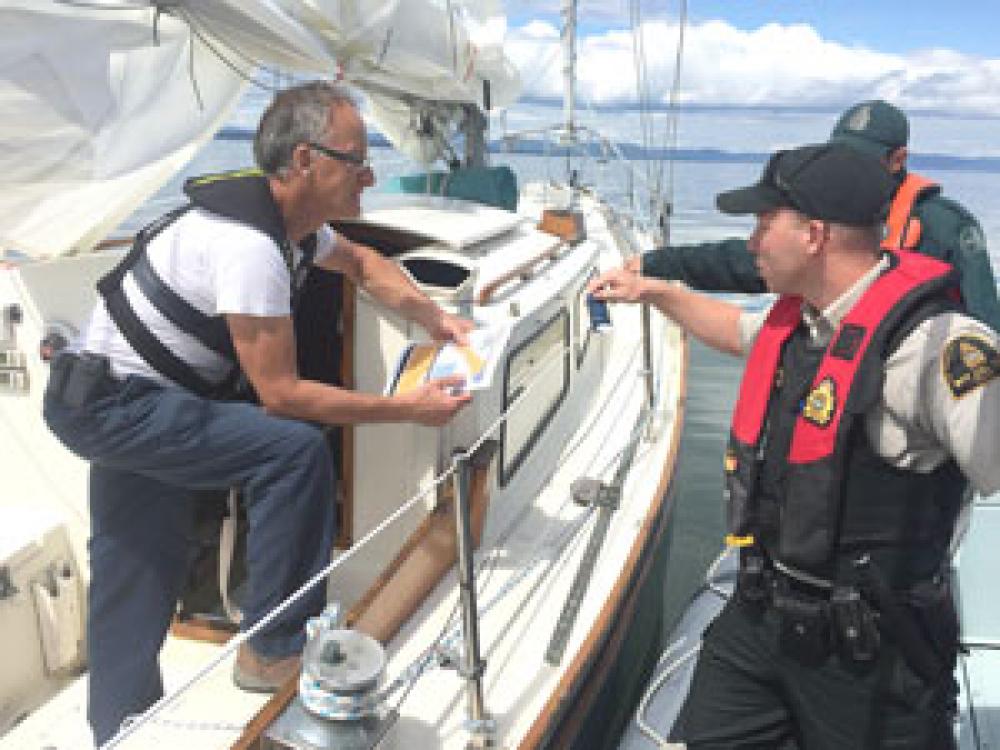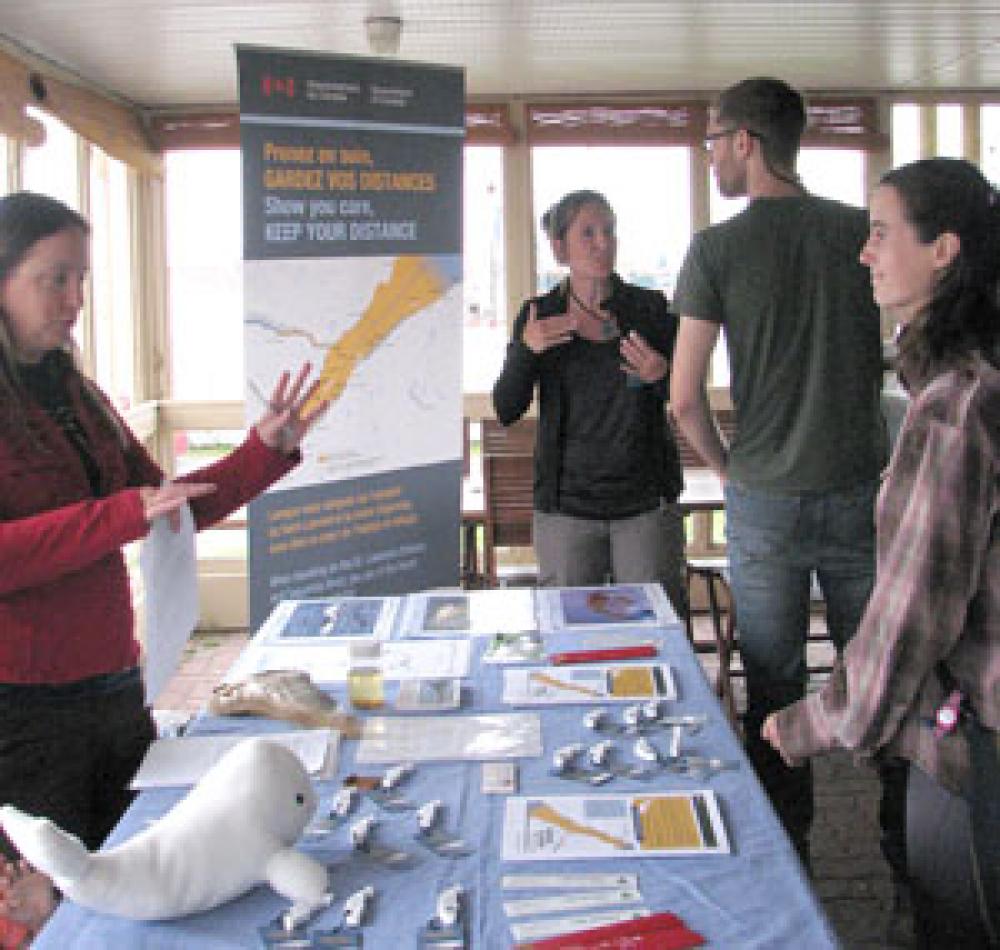
Boaters and Belugas: Keep your Distance!
For the second consecutive year, Fisheries and Oceans Canada and Parks Canada are encouraging recreational boaters to adopt good practices on the water to protect the beluga whales of the St. Lawrence. Under this year's theme Show you care, keep your distance!, boaters are encouraged to move away from beluga whales to avoid disturbing this endangered species.
During the peak tourist season, Fisheries and Oceans Canada and Parks Canada patrolled the south shore of the St. Lawrence and the Saguenay–St. Lawrence Marine Park to raise awareness among sailing and powerboat enthusiasts and kayakers about good practices to adopt when on the water.
Fisheries and Oceans Canada and the Réseau d'observation des mammifères marins (ROMM)—a marine mammal ecowatch network—also met with recreational boaters on shore in Rivière-du-Loup, Rimouski, Kamouraska and Saint-Jean-Port-Joli during the summer. They used special events such as the Fête des chants marins to speak to local pleasure boaters from the south shore of the Estuary.
The some 150 recreational boaters they met were given an information sheet on best practices to adopt in the presence of belugas. Sailing and powerboat enthusiasts got a floating keychain, and kayakers a waterproof pouch. With the name of the campaign written on them and a reminder of best practices, these objects will help them remember what they have to do to when on the water to avoid disturbing belugas.
Belugas need space and a peaceful environment
When beluga whales approach your vessel, or when you approach them, they react to your presence by changing their behaviour. Your presence can disturb their resting, feeding activities, even the birthing or nursing of their young.
There are thousands of boats in the Estuary between June and September, during the beluga birthing season. All these disturbances can have consequences for the health and reproduction of beluga whales and on the survival of their young. This is why it is important to keep your distance.
To learn more about best practices for navigation around beluga whales, check out our information sheet.
This awareness initiative is conducted in collaboration with the ROMM and the Group for Research and Education on Marine Mammals (GREMM).
Best practices for navigation around beluga whales
If you see one or many beluga whales:
1. Don't try to approach them: KEEP YOUR DISTANCE.
2. SLOW DOWN and move away, keeping at least 400 metres between you and the beluga whales.
3. If a beluga whale comes near your vessel, SLOWLY MOVE AWAY with caution.
- In a boat: Don't stop. Continue to sail until you are at least 400 metres away from the belugas, and maintain a constant speed between 5 and 10 knots. Avoid repeated changes of direction. If the 400-metre distance is impossible to maintain, stay the course.
- In a kayak: Don't stop. Continue to paddle until you are at least 400 metres away from any belugas.
Andréanne Demers
Ecosystems Management







